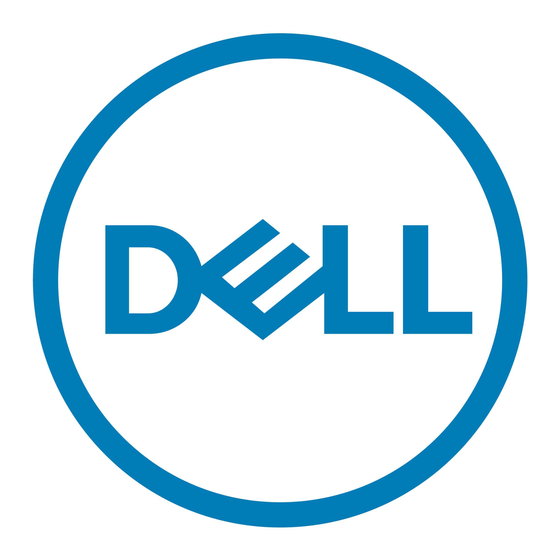Dell PowerEdge R820 Panduan Teknis - Halaman 42
Jelajahi secara online atau unduh pdf Panduan Teknis untuk Server Dell PowerEdge R820. Dell PowerEdge R820 50 halaman. Poweredge series
Juga untuk Dell PowerEdge R820: Instalasi (2 halaman), Instalasi (2 halaman), Panduan Memulai (9 halaman), Panduan Portofolio (27 halaman)

Dell
16.3.1
Unified Server Configurator
The Unified Server Configurator (USC) is a graphical user interface (GUI) that aids in local server
provisioning in a pre-OS environment. To access the Unified Server Configurator, press the <F10> key
within 10 seconds of the Dell logo appearance during the system boot process. Table 14 details
current functionality enabled by the USC.
Table 14.
Feature
Faster O/S Installation
Faster System Updates
Update Rollback
More Comprehensive Diagnostics
Simplified Hardware Configuration
16.3.2
Base Management Functionality
The following base management features are supported on the PowerEdge T110 II:
IPMI v2.0 support
Conductivity:
o Shared/failover network modes
o IPv4
o VLAN tagging
o Dynamic DNS
Security and authentication:
o Role-based authority
o Local users
Remote management and remediation:
o Server power control
o Serial-over-LAN (with proxy)
Monitoring:
o Sensor monitoring and alerting
o Real-time power monitoring
o Real-time power graphing
o Historical power counters
System Event Log
PowerEdge T110 II Technical Guide
Unified Server Configurator Features and Description
Description
Drivers and the installation utility are embedded
on system, so no need to scour Dell.com.
Integration with Dell support automatically
directed to latest versions of the Unified Server
Configurator, RAID, BIOS, NIC, and power supply.
Ability to recover to previous ―known good state‖
for all updatable components.
Diagnostic utilities are embedded on system.
Detects RAID controller and allows user to
configure virtual disk and choose virtual disk as
boot device, eliminating the need to launch a
separate utility. Also provides configuration for
BIOS and NIC/LOM.
42
